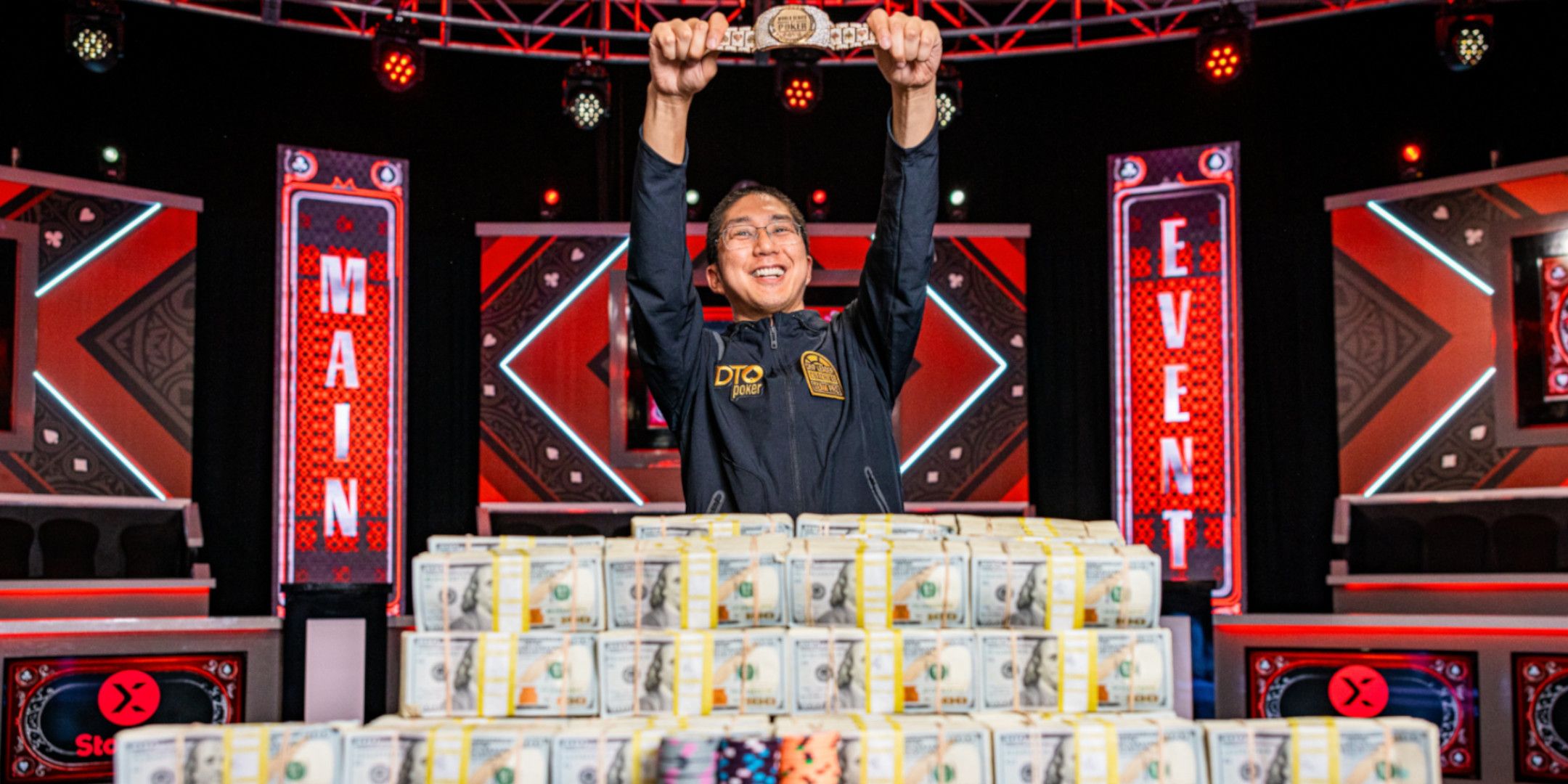The 55th annual World Series of Poker main event ended late last week, hosting a record-breaking field of more than 10,000 players and a grand prize of $10 million. The final table began with nine players last Tuesday and ended Wednesday with professional Jonathan Tamayo besting amateur Jordan Griff for the top prize.
This was the biggest year the World Series has ever had, both in terms of attendance and the size of its eye-watering $94,041,600 prize pool, but unfortunately the results of the final table have been mired by a cheating controversy thanks to Tamayo and his rail’s controversial use of real-time assistance software to gain an advantage over Griff.
If you watched the final table (an unlikely scenario given that the event is now locked behind a $20 paywall on PokerGo) you would have seen Tamayo frequently leaving to table to consult with his team on the rail, study something on a laptop, then return to the table to play his next hand. Photos taken by others in the audience indicate that Tamayo was reviewing info about previous hands, which could give him insights about patterns and strategies his opponents use that would help Tamayo make more informed choices at the table. This is the heart of the issue and why many in the Poker community think Tamayo cheated his way to victory.
Using technology to gain an advantage at the poker table seems like a pretty cut-and-dry violation, but it’s a little more complicated than it first appears. With a one hour stream delay before Tamayo’s bench can see what his opponents’ cards were, it’s debatable how much this actually benefited him. Even if all of the data was plugged into a solver (sophisticated AI-driven software that can determine ‘perfect’ strategies) and Tamayo’s team was able to identify certain patterns in play, that doesn’t mean he knew what they would do next. Some say there isn’t much to be gained from watching hands from an hour ago, others say the results speak for themselves.
Related
Pokemon TCG: The 10 Most Valuable Cards In Ancient Origins
Legendary Pokemon rule the most valuable cards in Ancient Origins.
A more obvious advantage Tamayo could have gained would be using solvers to inform his pre-flop strategies. Pre-flop charts based on GTO (game theory optimal) have evolved over the last couple of years into programs that can instantly analyze your position, stack size, and the stack size of your opponents, and tell you how you ought to play each hand. Reviewing hour-old hands may provide beneficial info, but using a solver to determine your pre-flop play is the equivalent of letting a computer make the perfect first move for you. The evidence indicates Tamayo was using a solver, but it’s unclear what exactly he was using it for.
The question is, was this cheating? Surely if it was, the tournament organizers would have stepped in and told Tamayo’s team to stop, right? Again, it isn’t straightforward. While announcements were made daily during the main event leading up to the final table that solvers were not permitted at the table or in the tournament area, there isn’t anything in the official WSOP rules that specifically prohibits them. At the final table Tamayo used a solver in plain view, making no attempt to hide what he was doing while the spotlight was on him during his heads-up session with Griff. It seems clear that Tamayo didn’t think he was doing anything wrong, and the WSOP didn’t do anything to stop him.
Unlike the WSOP, Nevada gaming regulation does have a clear provision prohibiting the use of solvers. So while it may not explicitly be against the WSOP rules, they are against the law.
It is perfectly normal to have a group of fans and supporters on your rail to support you and give you advice during a final table. Some even employ coaches to be there and provide input between hands the way a boxing coach would. It isn’t out of the ordinary to have laptops and other devices on the rail either, as people often watch the live stream during the final table. The only problem here is the use of solvers, which may not have technically been against the rules anyway.
The backlash to this situation among the poker community would suggest that there will be a rule against using real-time assistance tools like solvers in the future. They are already prohibited when playing online (poker sites now use anti-cheat to root out players using solvers to play for them) so it only makes sense to ban them from live play too. Whether it was technically cheating or not, it was a bad look for Tamayo and the game. The whole situation is a real shame, considering it likely didn’t give him a significant advantage anyway. There’s no doubt Tamayo is a highly skilled player, but now he’ll be known by many as the player that cheated to win the WSOP.

Next
Every Card Revealed For Disney Lorcana’s Shimmering Skies
It’s time for a celebration with Disney Lorcana’s fifth set, Shimmering Skies.

